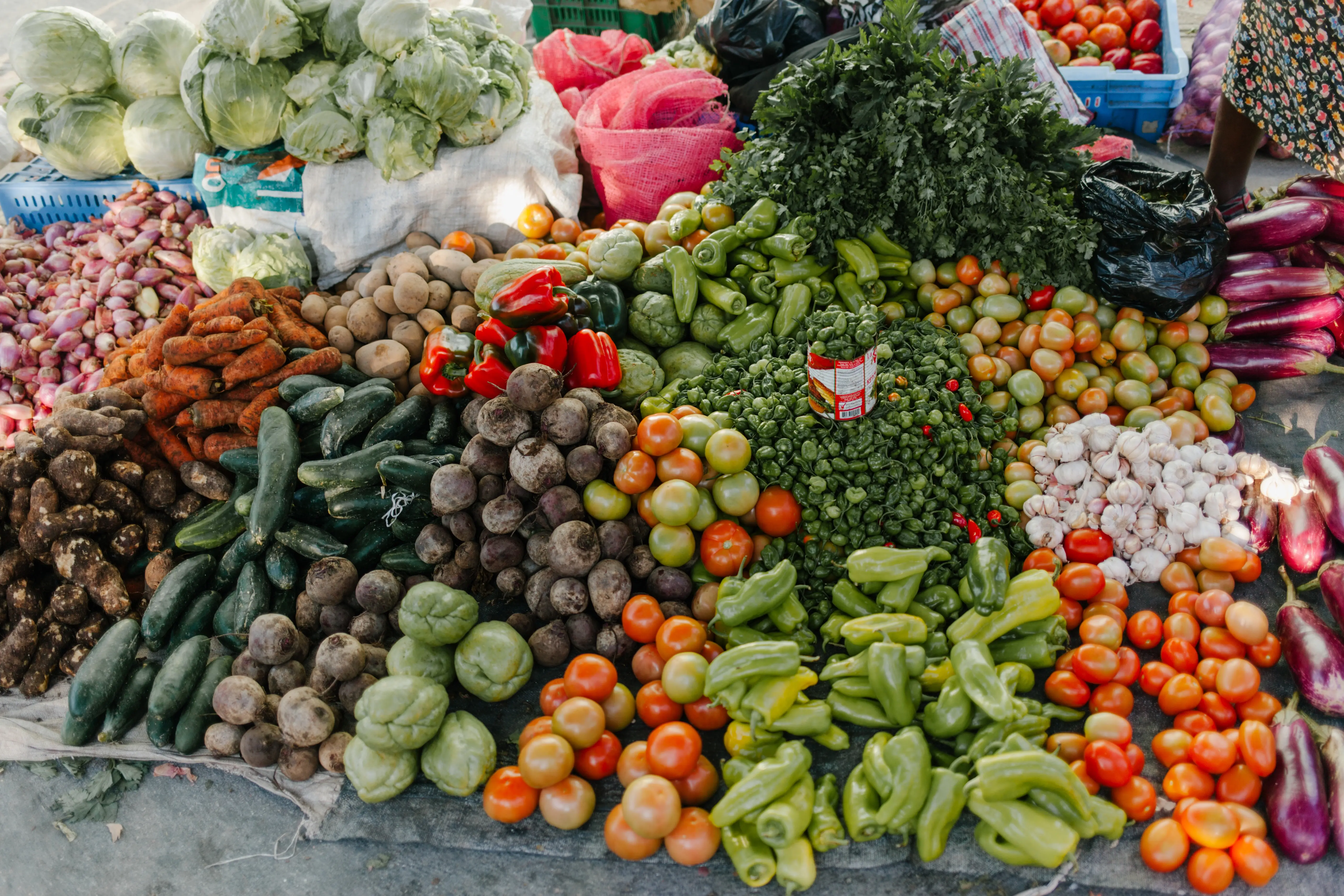Question 1: Domestic Hunger and Poverty
Food insecurity in the U.S. is a matter of concern that demands attention. In the past, some people have suffered domestic hunger. Historical records indicate that some households have experienced inadequate dietary quality and quotients due to food insecurity. During such times, both children and adults had insufficient food due to the lack of money to purchase food. The Great Depression of 2008 exemplifies such times in recent history. During the period, food insecurity in households with children reached a high of almost 21.3%, while food insecurity amongst children reached a high of 11.0%. As many as 1.3% of all children experienced very low food security (U.S. Department of Agriculture, 2020). The statistics indicate the horror that children are likely to undergo in such unfortunate occurrences.
Other statistics show that food insecurity varies according to the levels of education, disability status, and employment status. Households are classified as having either very low food security, low food security, or being food secure. This ratio rises according to the rise in education status. Households with less than high school education have a ratio of 11%: 16%: 73%. Households with high school education only follow at 6%: 10%: 84% (U.S. Department of Agriculture, 2020). Households whose members have some college education and those with college or above college education are least affected. They stand at 5%: 8%: 87% and 2%: 3%: 95%. In the perspective of employment status, the people who work part-time and those who are not in the labor force are most susceptible to domestic hunger. Similarly, disabled persons in society are more vulnerable to domestic hunger than healthy and working people. These statistics indicate the extent to which social and economic statuses determine the welfare of households in the U.S. in the crucial matter of food security.
2: Hunger and poverty in California
Contrary to expectations, the Silicon Valley cities of Santa Clara and San Jose State University are characterized by hunger and poverty. According to Simmonds (2017), about 26.8% of the population of Silicon Valley are food insecure. It means that about one person in every group of four is likely to experience seething hunger. Domestic hunger is the result of the poverty that accompanies low income. For example, in Santa Clara County, households whose income is about or below $84,750 are highly vulnerable to hunger. Their members are experiencing high housing costs, which results in poverty and food insecurity. It means that they should be considered when determining the people who are eligible for assistance in housing programs.
The paradox of food insecurity in Silicon Valley is that it is a technology and food hub, yet a significant number of its population experiences hunger. According to the California Association of Food Banks (2020), California produces as much as half of all fruits and vegetables consumed in the U.S. Ironically, hunger is common in San Jose State University. According to the Second Harvest of Silicon Valley (2018), 21% of students often lack a meal for a whole day. Another 39% often failed to eat due to lack of money. The remaining 50% often have to reduce their intake per day for the same reason. The school feeding programs are inadequate in catering to the food needs of the students. For this reason, students with little or no income suffer food insecurity.
3: Steps related to COVID-19 pandemic
The ideas presented in the community conversation suggest that non-governmental agencies have roles to play before and after the disaster (National Issues Forums (2015). Red Cross is one of the organizations that has taken significant steps commensurate with the magnitude of the disaster. Among the initial steps was formulating teams of volunteers and training them on how to assist the affected during such pandemics (Red Cross, 2021). For example, the American Red Cross of Colorado volunteers were trained to assist in the vaccination process. The organization has also served as a liaison between the affected and emergency services by providing ambulances to assist in transporting the critically ill to medical facilities that offer ventilation services. At the local level, they have been offering their usual disaster relief services, thereby easing the work of the government in serving other people who need other forms of assistance.
4: After-disaster Activities
Governmental and non-governmental organizations should be doing several activities to minimize exposure to food insecurity, homelessness, and the exacerbation of poverty and powerlessness. Taking serious efforts to support the existing food production programs is one way the government can ensure the continuity of food production during and after the pandemic (ICFDN, 2018). It will be easier to ensure the continuity of the projects instead of establishing new ones since novice activities take time to yield appropriately. It is also important for the government to look into the main sources of the problems. Among them is the elimination of income since some people have lost their jobs in the COVID-19 pandemic. The government can increase its support for small and medium-sized businesses to ensure the continued flow of sustainable income to the affected households. For example, the government can enable banks to offer loans at low interest rates.
Governments and non-governmental agencies around the world have taken the initiative to minimize the incidence of food insecurity and the exacerbation of poverty. Amongst them is monitoring food prices and markets (IFPRI, 2020). Some governments are taking the initiative to communicate on the food market in efforts to prevent people from panicking and help farmers make rational decisions on production. Doing so is assisting in minimizing price surges that would have otherwise resulted from market speculation. Another innovative method that some authorities have implemented is creating social safety nets that shield vulnerable households from domestic hunger and increased poverty.
5: Agency Information
‘Meals on Wheels is a community–based organization that offers support to the elderly persons’ nutritious meals to enable them to remain at the comfort of their homes. Its mission statement is ‘To promote the dignity and independence of older adults, persons with disabilities, and other homebound persons by delivering nutritious meals and providing or coordinating needed services’ (Meals and Wheels, 2019). It was started in 1973 as a faith-based organization in Fort Worth to offer meals to seniors in the central city area but has grown to serve more people in Tarrant County.
The organization enables them to have memorable times in the places that they have been living for a significant percentage of their lives, instead of leaving them at the mercy of nursing homes. Its founders identified a need to buffer the elderly in Texas from the unfortunate incidences and impacts of hunger. The elderly persons in Texas were amongst the most affected since most of them went to bed hungry. The program sought to rescue them by delivering food to the homebound persons for a whole year at a cost that is lower than what they would have incurred if they were in a nursing hospital. The main program, dubbed Home-Delivered Meals, serves the target population by saving the taxpayers’ money that would have otherwise been lost if the food prices had not been subsidized (Meals and Wheels, 2019). It minimizes the amounts spent by eliminating the costs that they would have incurred if they paid for services in nursing homes. About 5200 volunteers offer their time to run the program.
5b: The Health Trust
The Health Trust is one of the American national agencies that have assisted people during the COVID-19 pandemic. The agency’s mission statement is ‘To build health equity in Silicon Valley’ (Health Trust, 2021). It is founded on the belief that everyone in the community needs the opportunity to be healthy despite their income, race, language, and age, amongst other identities. The Health Trust was founded in 1996 after three non-profit hospitals were sold. After its formation, it started serving the Silicon Valley population in its capacity as a foundation. Since then, it has been facilitating the welfare of the community, especially the vulnerable groups, by ensuring that there are grants for them to access, and the policies formulated to serve the population do it with utmost effectiveness.
The foundation receives its funds from donations and benefits from the services provided by volunteers. It also has several staff members who serve its clients by providing essential services. Its target population includes persons who risk falling victim to hunger and deficiency of various other essential services related to their health (Health Trust, 2021). During the COVID-19 pandemic, it assisted a large number of people, which has been on the rise. However, its operations are being affected by the proliferating number of volunteer cancellations amongst the people who deliver food and those who handle meals at various food distribution sites. Despite the challenges, it continues to impact the nutritional status of the target population by tailoring the meals to suit the needs of people living with chronic illnesses, HIV/AIDS, and heart failure. It also caters to the nutritional needs of homeless persons.
6: Reflections
This paper has improved my knowledge on the issues of domestic hunger and world hunger. I have learned that the generalization of regions as excellent in matters of food is not entirely correct. It is shocking to learn that some people are affected by domestic hunger in places where such occurrences are least expected. For example, in Silicon Valley, one would expect that almost all people, except the homeless, are well-fed in terms of both quotient and nutritional value (Simmonds, 2017). However, it is eye-opening to learn that some people are on the verge of hunger due to low education, social status, and disability. The main takeaway in this is that a lot of food is produced around the world, but a significant percentage of people struggle to have regular and nutritious meals. In this sense, domestic hunger in the U.S. equates with world hunger due to the discrepancy between the amount of food produced and the number of persons who are still undergoing the challenges associated with food and nutritional challenges.
It is also intriguing to learn that disasters exacerbate poverty and powerlessness. Disasters spell doom for people, both the employed and self-employed. The unemployed persons fall victim to retrenchment and salary cuts, while the self-employed suffer losses due to the reduced sales turnover rate. The COVID-19 pandemic exemplifies this situation. Households whose members were employed but lost their jobs after the pandemic arose have been getting less disposable income since then. It means that they are on the verge of hunger if the salaries they are getting now are less than the amounts they need to survive in their respective areas of residence. The same case applies to the people whose businesses were booming but declined due to the measures instilled in efforts to control the spread of the virus, such as lockdowns, curfews, and quarantine. Similar pandemics resemble the ongoing one in the negativity of effects. The adversity of their effects on their financial welfare is a major cause of the feeling of powerlessness.
I have also learned that disasters have numerous adverse effects on the nutritional statuses of individuals. Amongst the main ones is the increase in the number of people who need meals delivered at home. According to the Health Trust (2020), there is a surge in the number of homebound people in the ongoing pandemic. The vulnerable population is on the rise. Another effect of such pandemics is the decrease in the nutritional value of the foods that people are consuming. Adults are especially the most affected section of the population, owing to the need to cater to the nutritional needs of their children first. However, I think that the impacts of the situations can be minimized through various effective methods. Amongst them is the proactive action of governments in supporting the production of food and regulating the markets. Governments need to be steadfast in providing a conducive environment for farmers to continue producing food while minimizing the spread of fear of shortage to ensure sanity in the market. Doing so can ensure that the vulnerable populations have access to a good supply of affordable food.
References
California Association of Food Banks. (2020). Hunger Data. California Association of Food Banks. https://www.cafoodbanks.org/hunger-data/.
ICFDN. (2018, April 17). How Recovering from a Natural Disaster Impacts Food Security. International Community Foundation. https://icfdn.org/recovering-natural-disaster-impacts-food-security/.
IFPRI. (2020). Preventing Global Food Security Crisis Under Covid-19 Emergency. ifpri.org. https://www.ifpri.org/blog/preventing-global-food-security-crisis-under-covid-19-emergency.
Meals and Wheels. (2019, December 8). Meals and Wheels. Meals On Wheels of Tarrant County. https://mealsonwheels.org/about/.
National Issues Forums. (2015, September 16). Who Should Do What: The Role of Citizens, Government, and Non-governmental Organizations in a Disaster. NIFI. https://www.nifi.org/en/groups/who-should-do-what-role-citizens-government-and-nongovernmental-organizations-disaster.
Red Cross. (2021). Pandemic One Year Later; How the Red Cross is Helping. American Red Cross. https://www.redcross.org/about-us/news-and-events/news/2021/pandemic-one-year-later-how-the-red-cross-is-helping.html.
Second Harvest of Silicon Valley. (2018, September 11). Fighting Hunger at San Jose State University. Second Harvest. https://www.shfb.org/impact/blog/college-hunger-sjsu/.
Simmonds, C. (2017, December 12). The Silicon Valley paradox: one in four people are at risk of hunger. The Guardian. https://www.theguardian.com/us-news/2017/dec/12/the-silicon-valley-paradox-one-in-four-people-are-at-risk-of-hunger.
The Health Trust. (2021). The Health Trust. https://healthtrust.org/.
U.S. Department Of Agriculture. (2020). Interactive Charts and Highlights. USDA ERS – Interactive Charts and Highlights. https://www.ers.usda.gov/topics/food-nutrition-assistance/food-security-in-the-us/interactive-charts-and-highlights/.










